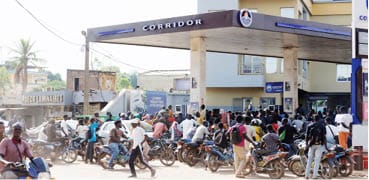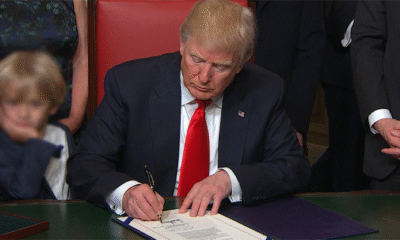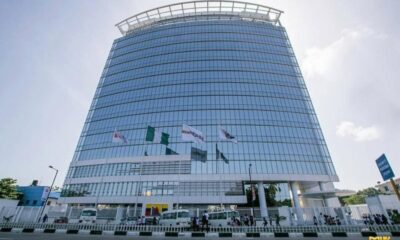African News
Fuel Scarcity: How Jihadists Are Bringing Mali’s Capital To Its Knees

A months-long siege of Mali’s capital, Bamako, by the al-Qaeda affiliate Jama’at Nusrat al-Islam wal-Muslimin (JNIM) is testing the resilience of a city and the resolve of a military government struggling to maintain control.
Since September, the group has executed a methodical economic and fuel blockade, sealing major highways used to transport fuel from neighbouring Senegal and the Ivory Coast. The result: long queues at petrol stations, school closures, and a city teetering on the brink of paralysis.
While JNIM has long operated in rural northern and central Mali, this is the first time it has applied a siege tactic on the heart of the nation. Security analysts warn that this manoeuvre may be less about capturing Bamako outright and more about creating sustained pressure on the military junta, which has refused to negotiate with the insurgents.
“Overland transport has been heavily impacted in terms of both transit times and costs, as a result of security challenges and fuel shortages,” said CMA CGM, one of the world’s largest shipping firms, explaining its reversal of a decision to suspend cargo shipments to Mali. “Despite these conditions, and in order to continue serving its customers, CMA CGM has decided not to suspend its activities to Mali, including overland transport.”
The siege has intensified a crisis that already looms large over the West African nation. Long queues snaking around petrol stations have left many residents stranded, while normally bustling streets have fallen eerily quiet. The military government had initially assured citizens that the fuel shortage would be temporary, but the blockade has persisted. Even the US and UK governments have warned their citizens to leave Mali, evacuating non-essential diplomatic staff amid concerns that the fuel disruptions could destabilise the overall security situation.
Anatomy of JNIM’s siege
JNIM, the Sahel affiliate of al-Qaeda, has become the most active armed group in the region. Formed in 2017 as a merger between Algeria-based AQIM and several Malian armed groups, including Ansar Dine, Al-Murabitun, and Katiba Macina, the group has steadily expanded its footprint. Its leader, Iyad Ag-Ghali, an ethnic Tuareg from northern Mali, combines a history of rebellion with a reputation for negotiation, making him a formidable strategist.
While estimates suggest JNIM has about 6,000 fighters, analysts argue the group does not yet possess the capacity to capture large urban centres such as Bamako.
“They want to basically make people as angry as possible,” said Ulf Laessing, Sahel analyst at the German think tank Konrad Adenauer Stiftung. “They could [be trying] to provoke protests which could bring down the current government and bring in a new one that’s more favourable towards them.”
JNIM’s strategy is multidimensional: ambushes on fuel convoys, destruction of infrastructure, and direct interference with public services. Videos circulating on Malian social media show rows of fuel tankers burning on highways, while efforts to truck in fuel are repeatedly attacked by militants.
For weeks, most Bamako residents have been unable to buy fuel for their vehicles, prompting some to abandon cars in front of petrol stations. The government has threatened to impound these vehicles to ease traffic and reduce security risks. The siege has tangible consequences for daily life. Schools across Mali have been closed until November 9, after Education Minister Amadou Sy Savane cited the inability of staff and students to commute safely. Diesel shortages have disrupted power supplies, leaving homes and businesses without electricity. Prices of fuel have skyrocketed, with one litre reportedly jumping from $25 to $130, driving up the cost of transportation, food, and other essentials.
Pressure on the junta
The fuel blockade is not merely a logistical problem; it is a direct challenge to the authority of Mali’s military government, led by Gen. Assimi Goïta, who seized power in a 2021 coup. Initially enjoying popular support for promising to resolve the country’s long-running insurgency, the junta now faces a crisis testing its capacity to govern a sprawling, urban population.
JNIM’s siege forces the government to divert personnel and resources to protecting fuel convoys, weakening its ability to secure reclaimed territories.
“If they can come in and allow the fuel to flow into Bamako, then the Russians will be seen as heroes,” Laessing told Al Jazeera, referring to Russian Africa Corps fighters hired by the junta. The effectiveness of these mercenaries remains uncertain, and their ability to counter JNIM’s guerrilla-style tactics is unproven.
The group’s long-term aim appears to be political leverage. While previous civilian administrations engaged with the group, Goïta’s government has opted for a military response, though some local-level talks have reportedly taken place in Segou, Mopti, and Timbuktu regions. These arrangements allow JNIM to temporarily ease blockades in exchange for communities adhering to its rules and taxes.
Economically, JNIM finances its operations through artisanal gold mining, taxation of local communities, cattle rustling, smuggling, and kidnapping for ransom. Control over gold-rich areas, such as Kayes, underscores how the group leverages resource wealth to sustain its operations and enforce its siege strategy.
As the blockade continues, the government faces a choice: maintain a purely military stance, risking prolonged civilian hardship, or explore negotiations, potentially altering the balance of power in Mali. Either way, the siege of Bamako is a clear indicator that JNIM is not merely a rural insurgency; it has the capacity to challenge the heart of Mali itself.(Daily trust)
-

 News19 hours ago
News19 hours agoAlleged Genocide: Igbo American Veterans Call For Establishment Of US Military Base In Nigeria
-

 Politics19 hours ago
Politics19 hours agoPDP State Chairmen Disown Wike’s Faction, Declare Total Support for Damagun
-

 News19 hours ago
News19 hours agoCourt Fixes Nov 20 For Judgement As Kanu Waives Right To Defend Self
-

 News19 hours ago
News19 hours agoU.S. revokes visas of 80,000 Nigerians, other nationals
-

 Politics3 hours ago
Politics3 hours ago‘They Are Out Of Ideas,’ – Momodu Dismisses Allegation Of Opposition Pushing Genocide Claims
-

 Business19 hours ago
Business19 hours agoITV in talks to sell TV, streaming arm to Sky for £1.6bn
-

 Business3 hours ago
Business3 hours agoNigeria’s $2.3 billion Eurobond costly at 9%, says Nairametrics CEO
-

 Business3 hours ago
Business3 hours agoNestoil promoters mount pressure on FHC chief judge to reverse Mareva order – Sources
